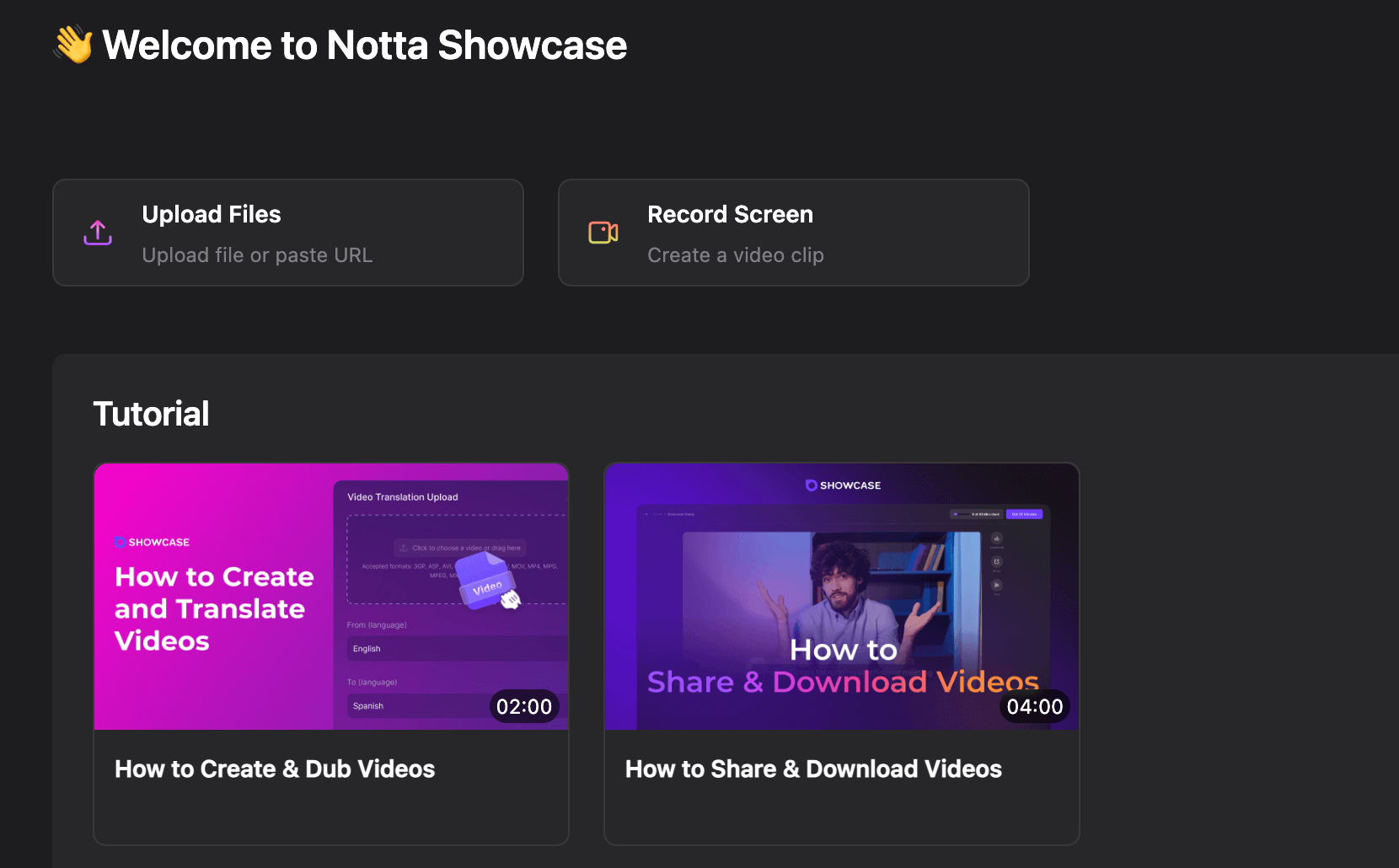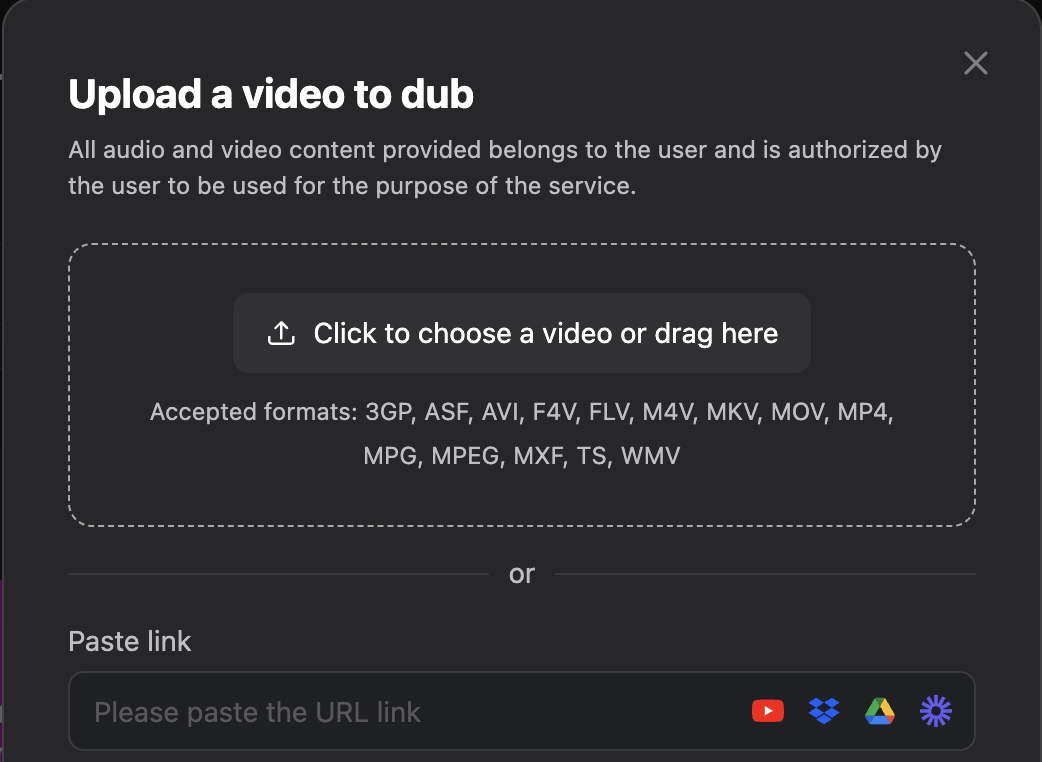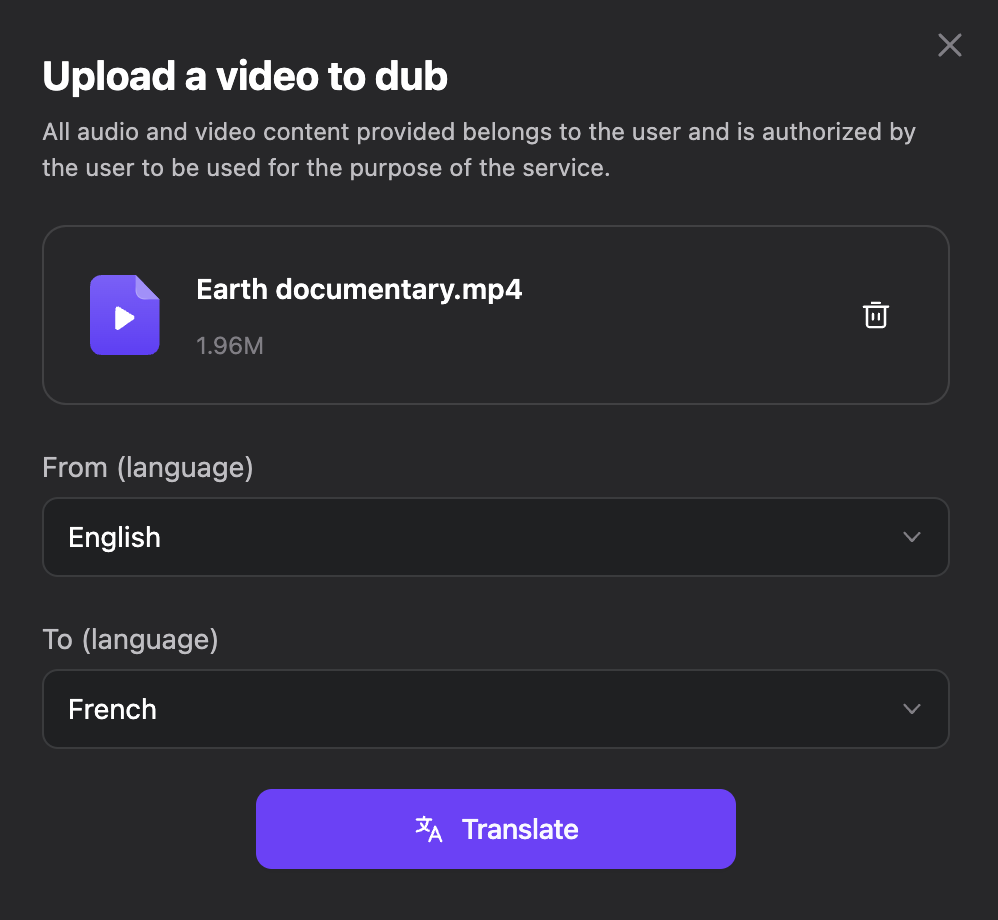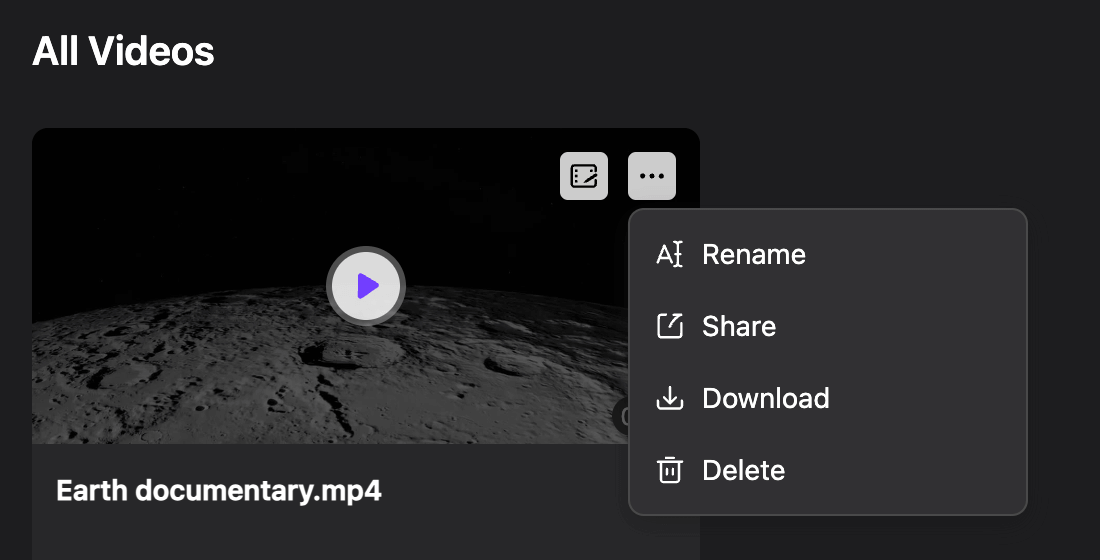
What is Dubbing? Everything You Should Know
Notta Showcase instantly translates your video into 15+ languages to reach a global audience.
In a globalized world where video content from one part of the world is easily accessible in other areas, dubbing, as one of the most effective localization methods, continues to grow in popularity for breaking language barriers.
However, dubbing goes way beyond just language translation and replacement. It involves some technical steps you must go through to make the dubbed video look like it was initially produced in the translated language.
In this detailed guide, we have broken down the technicalities in simple terms, starting from what dubbing is to how to dub a video. Read this article to the end, and you should have your first successfully dubbed video in minutes.
Understanding dubbing and its applications
Dubbing is a post-production process that involves replacing the original dialogue in a video with another in a different language. This is done without affecting the audio-visual synchronization, making the content appear original.
The primary purpose of dubbing is to ensure viewers can enjoy or connect with a video that was not originally in their language, without distorting their viewing experience, as with subtitles.
While dubbing started with and became popular with the filmmaking industry, it has found different areas of applications:
Film and television: Dubbing is extensively used in the entertainment industry to make films and television shows accessible to a global audience. It is particularly important for children's content, as it helps them engage with the characters and storylines more effectively. Major film markets like Hollywood and Disney frequently dub their productions into multiple languages to reach viewers worldwide.
Video games: Dubbing in video games involves replacing the original dialogue with versions in different languages, making the game more accessible to players worldwide. It is also used to add a storyline and other audio tracks to an already-created game through narration. Overall, dubbing helps create better gameplay and gives players an elevated gaming experience.
Education: In the educational sector, dubbing is employed to localize e-learning content for international audiences. This adaptation helps ensure that learners can engage with the content in their native language, enhancing comprehension and retention.
Advertising and marketing: Dubbing is also used to adapt commercials, promotional videos, and other marketing content for international audiences. It helps companies effectively convey their message and connect with consumers in their local languages, increasing the reach and impact of their marketing campaigns.
What are the different types of dubbing
Video dubbing comes in different styles and forms depending on the content type, target audience, and other requirements of the project. Listed below are some of the popular styles.
1. Lip-sync dubbing
Lip-sync dubbing requires matching the dubbed audio precisely with the lip movements of the on-screen characters, providing a natural and original feel to the video. It's the most detailed and challenging type of dubbing, aiming for a seamless match so that the audience believes the actors are speaking their native language.
This style is often used in movies and television shows where visual authenticity is crucial.
2. Time-sync dubbing
Time-sync dubbing focuses on aligning the dubbed speech with the specific timeframes of the original dialogue but doesn’t necessarily match the lip movements. In this case, the voice actor only needs to consider the timeframe in which a line was spoken.
This form is often used where exact lip-syncing is less crucial, such as in animated films or when dubbing content from languages with very different phonetic structures.
3. Voice over dubbing
Voiceover dubbing is the process of adding translated audio over the original dialogue in a video while the original audio is faintly audible. In this case, the most important thing is the information conveyed, not getting the precise lip movement right.
Voiceover dubbing is less expensive and simpler to produce. It’s commonly used in newscasts, documentaries, and sometimes for interviews, where the original audio's presence adds authenticity.
4. Narration dubbing
This involves having a narrative voice in different languages over a single video that explains the events on the screen. In this case, the original dialogue might still be audible but at a lower volume.
Narration dubbing is usually used in documentaries or educational programs, where the focus is on conveying information clearly rather than on dramatic effect.
The dubbing process explained
After discussing the basics of dubbing, we can now detail the process of doing it properly. These steps are general processes that might be slightly different depending on your dubbing requirements.
Step 1: Script translation and adaptation
This is the most crucial step in the dubbing process. First, ensure that the translated script is accurate and well-written. This can be done by an expert human translator or by using video translator software, with a human translator vetting the output.
After ensuring the accuracy of the translation, you can proceed to adapt it to fit the cultural specifications and linguistic nuances of your target audience. This might involve changing some expressions, cultural references, and idiomatic phrases to make the content resonate with your target audience.
Step 2: Voice actor casting
After the translated script is ready, it is time to select the voice actors who can do the job impeccably. Some factors you need to consider are linguistic fluency (give preference to native speakers), acting skills, vocal range, and the voice actor's ability to match the emotional nuances of the original characters. This ensures they can maintain the essence of the original performance and make the message relatable.
To ensure you get this step right, you can set up an audition in which different voice actors read lines from the translated script.
Step 3: Audio recording
With the voice actors selected, you can proceed to the recording stage. This is usually done in a recording studio with no disturbances. The voice actors need to match the rhythm, lip movements, and pace of the original characters.
It is good practice to get a voice director to oversee this process. The voice director will guide the voice actors and give timely feedback to ensure the quality of the performance.
Step 4: Dialogue mixing and editing
Once the voice recording is ready, careful editing is needed to remove any unwanted sound, such as breathing noise. After that, you can mix audio with other sound effects in the original audio.
Finally, the mixed audio is synchronized with the visual elements in the video to create an immersive viewing experience for your audience. All these needs to be done by an ADR expert.
Step 5: Quality control
Before releasing the video to the public, perform a final extensive quality check and make the necessary adjustments. Some of the things you need to check include audio volume levels, synchronization, and other technical qualities.
Elevate your dubbing efforts with AI
AI has revolutionized and optimized many fields, and video dubbing is not exempt. With AI-powered software, you don’t need to go through the hassle of manual dubbing, as these tools practically automate the whole process without costing a fortune.
One of the standout AI dubbing software that combines effectiveness with speed is Notta Showcase.

It uses advanced speech recognition and machine learning technology to analyze and create the dubbed version of videos in 15 of the most spoken languages, including Japanese, Chinese, English, and Spanish. With this, you can make your videos available to audiences in the biggest markets in a few minutes.
What's more, Notta Showcase has a voice cloning feature that helps you replicate the original speaker's voice in different languages. This helps keep a consistent intonation and style across your videos.
To dub your automate your video dubbing with Notta Showcase, follow the steps below:
Step 1: Upload your video
Launch Notta Showcase and click the ‘Upload Files’ button in the upper left corner of the dashboard. Upload the video you want to dub from your device. This tool supports different formats, such as MP4, MOV, and WMV.

Step 2: Start translation
Select the source and target language and click the ‘Translate’ button to start translating the video.

Step 3: Review and export your video
When the translation process is complete, review the video to ensure it is precisely what you want and export it to your device.

Wrapping Up
Dubbing is an effective way of reaching audiences in any part of the world in their preferred language. However, you still need to know how to implement it properly to take maximum advantage of its benefits.
We have detailed the steps you need to follow to create perfectly dubbed videos, regardless of your field. However, the manual method introduced is primarily for big organizations and directors in the filmmaking industry who have the time and resources required.
As a solution for content creators running on tight budgets, we recommend giving AI-powered dubbing software a try, with which you can automate the dubbing process at a relatively low cost without compromising quality.